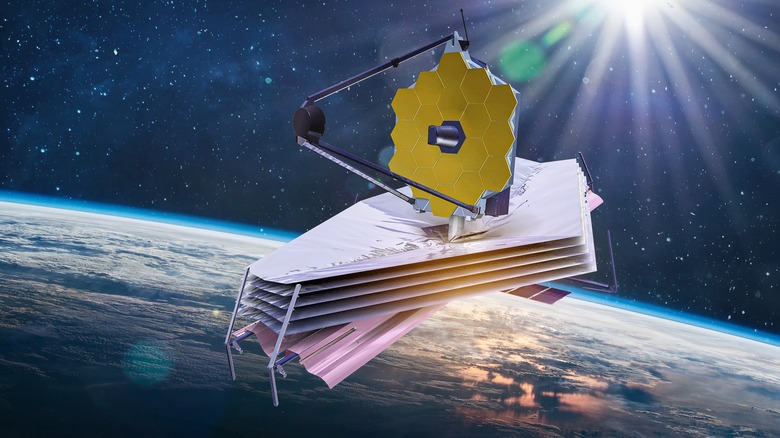One Exoplanet's Discovery Reminded Scientists Of A Kevin Costner Movie
In 2022, NASA's Transiting Exoplanet Survey Satellite (TESS) brought back data on a particular exoplanet (defined as any planet that orbits a sun in a solar system outside our own, via Britannica). The planet in question, dubbed TOI-1452 by astronomers, orbits a red-dwarf star roughly 100 light-years away from Earth, just a short hop by outer space standards, as NASA explains. Notably, evidence gathered by TESS and other high-powered space exploration telescopes suggests this planet could share one distinct characteristic with Earth — only more so.
Signs point to TOI-1452 being the sort of planet astronomers have long speculated could exist but up to this point had yet to discover. Exactly what that planet could be might bring to mind for some scientists a classic Kevin Costner movie, as CBS News reports. Continued research — such as further data gathered by the James Webb Space Telescope, the most powerful space telescope in history, hovering 1 million miles above the Earth's surface — could confirm whether or not scientists' might be right, while also offering a deepened understanding of outer space beyond our own solar system (per Space.com).
TOI-1452 is 70% larger than Earth
As reported by CBS News, TOI-1452 is 70% larger than Earth and has much more mass than our home planet. Given the distance of TOI-1452 from the closest red-dwarf star that it orbits, a year on the exoplanet lasts roughly 11 days. The exoplanet was discovered when it passed in front of one of the two stars it orbits, which caused the light produced from that star to dip in NASA's instruments. The degree to which the star's light was affected by TOI-1452 when the planet passed in front of it not only helped scientists notice the exoplanet's existence but also allowed them to estimate its overall size and mass, both thought to be much larger than Earth's.
What those numbers revealed suggests that TOI-1452 could be entirely covered by oceans, just like in the 1995 Kevin Costner-directed film "Waterworld" (via IMDb). Charles Cadieux from the Institute for Research on Exoplanets, who worked on the TOI-1452 study published by The Astronomical Journal said, "TOI-1452 b is one of the best candidates for an ocean planet that we have found to date ... Its radius and mass suggest a much lower density than what one would expect for a planet that is basically made up of metal and rock, like Earth." Evidence also suggests that this exoplanet could be similar to the water moons like Ganymede and Callisto in Jupiter's orbit, where water trapped under ice is thought to exist (via CBS News).
TOI-1452's oceans might be much deeper than Earth's
Comparing the estimated mass of the recently discovered exoplanet TOI-1452 to Earth's, where oceans cover 70% of the planet but only make up 1% of our planet's mass, also leads scientists to speculate that if there are oceans covering TOI-1452, they could make up as much as 30% of the planet's mass, based on one simulation, per CBS News. What that might mean is that TOI-1452's oceans could be much deeper than the oceans on our own planet. To know for certain what the surface of the so-called "super-Earth" might be like, and if it is indeed covered in oceans, will take more data gathered by tools like the James Webb Space Telescope.
Launched in 2021, the James Webb Space Telescope hovers at around 1 million miles above the surface of the Earth. From that vantage point, the Webb telescope offers astronomers an unprecedented perspective on the origins of the universe and distant solar systems, including exoplanets like TOI-1452, according to Space.com. Among other aspects of its mission, the most powerful space telescope in history is also on the lookout for possibly habitable planets with a similar size, shape, atmosphere, and climate to that of Earth. NASA explains the Webb telescope could gauge the makeup of TOI-1452's atmosphere — including water, a building block of life — based on the spectrum of starlight passing through it.


